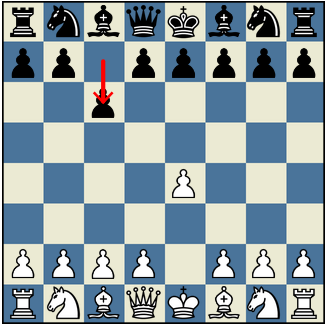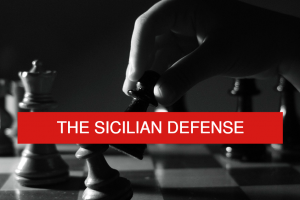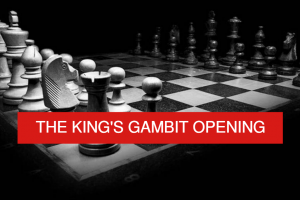
The Caro-Kann Defense is one of the most popular openings for Black, characterised by the moves:

- e4 c6
Black responds with 1….c6 with the idea of thrusting forward with d5 on the next move, attacking the white central pawn on e4.
The Caro Kann is a very patient and stubborn defense that is hard for White to break. The opening is named after the English player Horatio Caro and the Austrian player Marcus Kann who analysed it in 1886.
While White gets a nice space advantage, Black has no weaknesses and a very solid position.
The Caro–Kann Defence can be attacked in three different ways based on White’s third move:
[+] Main line (2. d4 d5)
[+] The Advance Variation: 3.e5
In this variation White wants to move his e4 pawn forward to e5, to gain central space and more mobility for his pieces.
Black wants to play Bf5, (to put his lightsquared bishop outside of the pawn chain). Then Black can close down his “pawn triangle” defense with e6.
Black has a solid central structure and White has more space in exchange.
[+] The Exchange Variation: 3.exd5
This is the safest option for White because White has conceded most of his opening advantage and made the position symmetrical. He deals with the danger to take on the e4-pawn by capturing himself on d5.
This line is considered to offer equal chances, and was tried by Bobby Fischer.
[+] The Tartakower or Fantasy Variation: 3.f3
This variation leads to very tricky and tactical games where multiple attacks can happen (from both sides). White’s idea is to strengthen his e4 pawn with his f3 pawn (to get a stronger grip on the center).
The drawback for White by playing f3, is that he also ends up blocking his own knight from developing and weakening the squares around the king.
The Caro-Kann Defense is one of the few defenses in chess where black can reach equality in the main line and many people would consider black to have a better position, especially in the end game when the main line is played out.
This is usually because black does not compromise his pawn structure and will usually have an easier end game.
Watch the video below to get a detailed explanation of the defense and extended lines.







